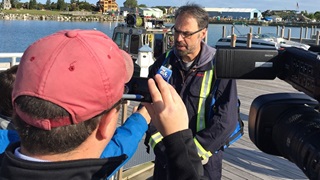A trained workforce keeps Michigan’s pipelines safe
Michigan Laborers’ Training and Apprenticeship Institute pipeline worker program accentuates public safety, environmental protection
By Lynn Coleman and Jim Rubel
Michigan Laborers’ Training and Apprenticeship Institute
If Michiganians want good jobs that provide family-supporting wages, then pipelines need to be part of the equation.
If Michigan is going to maintain a safe, secure, closely-monitored liquid pipeline system, then a properly trained work force is a great place to start.
That’s why Line 5, Enbridge’s 645-mile pipeline through Michigan’s Upper and Lower Peninsulas, is a key part of Michigan’s economic fabric. Its continued operation, monitoring and maintenance by a well-trained workforce is crucial to our state’s economy.
Line 5 is a key link for Michigan’s manufacturing industry to have the energy it needs to make the products we use every day. It also ships roughly 85 percent of the propane homeowners in the Upper Peninsula and Northern Michigan rely on for heating.
(EDITOR'S NOTE: As of June 2016, Line 5 meets 65 percent of propane demand in the Upper Peninsula, and 55 percent of propane demand across Michigan.)
Most importantly, making sure Line 5 continues to operate safely under the very highest quality monitoring and maintenance program is something Michigan residents should demand.
In part, that’s why the Michigan Laborers’ Training and Apprenticeship Institute (MLTAI) has focused on training pipeline workers through an intensive 80-hour course, with both classroom education and hands-on pipeline experience in the field.
The Institute itself isn’t new. For more than 40 years, members of the Laborers’ International Union of North America (LiUNA) have been able to attend classes at the MLTAI to maintain, upgrade or gain new skills. Management and union labor jointly administer the non-profit training facility, which is also privately funded.
But lately, we’ve seen interest in additional basic-level training for those who have had little experience in pipeline operations. While we can’t know exactly where a given student will end up working in the industry, our goal is for students to have a clear picture of what’s expected in any position — including operations and maintenance.
What should pipeline operations and maintenance crews expect to do on a day-to-day basis?
First, understand that a pipeline like Line 5 is monitored 24/7. Valves shut off automatically on either side of the Straits in three minutes if there’s a change in pressure or flow, and trained response teams go into action.
In addition, inspection and maintenance are large parts of the pipeline operations tasks. The inside of the Line 5 pipeline, for example, is regularly inspected using a mini MRI-like tool called a “pig” that travels the line recording data on the pipe’s thickness. It looks for cracks, dents or signs of corrosion, which are then monitored and assessed for repair.
Further, the outside of the pipeline is inspected repeatedly with the help of divers and remotely operated vehicles (ROVs) looking for changes in the protective coating. Preventative maintenance digs are also carried out onshore so facility operators can get a close look at the pipe’s condition.
In fact, Line 5 is inspected more frequently than federal regulations require. LiUNA members are responsible for some of that regular inspection work, especially around preventative maintenance digs. And inspections show that, from an engineering and integrity perspective, Line 5 continues to work the way it was designed. That’s partly because it was engineered to the highest standards in the first place, and exceeds today’s requirements for new pipeline construction.
Our graduates gain a clear understanding of the environmental responsibilities of the pipeline worker — from erosion control to species stewardship to waterway protection. It’s fair to say that environmental training, along with worker and public safety, rank as the most important aspects of our pipeline training courses.
That’s not difficult to understand. Our Union has roughly 13,000 members across the state. These members feel strongly about Michigan and its continued health — and they work every day to make sure pipeline operations are safe for their family, friends, and neighbors.
With our members working more than 17 million work-hours in the last decade on pipeline construction and operations, we know our program contributes to a very positive goal — good jobs based on safe and secure energy infrastructure for Michigan residents.
(Lynn Coleman is the director of the Michigan Laborers’ Training and Apprenticeship Institute (MLTAI) and Jim Rubel is an American National Standards Institute (ANSI)-certified Pipeline Technology instructor at the institute.)
This opinion-editorial was first published in the Detroit News on July 6, 2016.










